|
|
|
Savanna Modeling to Add Value to Climate Forecasts
The South African Weather Bureau (SAWB) uses advanced climate models to make short-term
weather forecasts and long-term forecasts of the climate. The long-term forecasts predict the
likelihood of having less rain than normal, normal rainfall, or more rainfall than normal. The
SAWB makes forecasts three months in advance, and general predictions about rainfall six
months in advance. The utility of these forecasts to farmers of the North-West Province are a
topic of our research, reported elsewhere. Here we seek to increase the utility of forecasts by
combining them with advanced ecosystem modeling to forecast forage availability and
appropriate stocking rates.
To add value to climate forecasts we use the Savanna Modeling System, developed by Michael
Coughenour over more than 15 years, to model semi-arid and arid ecosystems. Savanna was
designed to model East African grasslands, but now has been used around the world to assist in
range management. Savanna combines computer-based maps, weather data, and information on
how plants and animals reproduce, grow, and die to predict range condition and animal
production. Maps of elevation, soil types, vegetation, and water sources are divided into small
blocks (here 1 km x 1 km), and the state of each block is assessed over and over, once for each
week being modeled. Each block is further divided into layers of vegetation and soil, so that for
example the amount of light passing through each vegetation layer can be calculated and the
amount of moisture moving through the soil layers can be modeled.
The long-range forecasts the SAWB produces, and long-range forecasts in general, cannot
include specific predictions of rainfall. Instead they produce maps that show the likelihood,
reported as probabilities, of a wet, normal, or dry year (Figure 1). In Savanna modeling, we can
alter the weather data to represent the forecasted changes in rainfall. Then the ecosystem model
provides estimates - forecasts - of range condition, forage availability, and livestock production.
We can then change management practices, such as stocking rates, and re-run the computer
simulation to find optimal rates.
| |
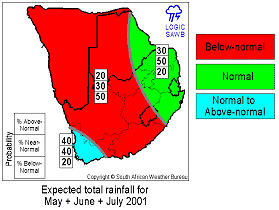 Figure 1. A three-month climate forecast for South
Africa, forecasting for the North-West
Province a 20% chance of a wetter May
through July, a 30% chance of normal
rainfall, and a 50% chance of the period
being dryer than normal (from the SAWB,
with permission). Figure 1. A three-month climate forecast for South
Africa, forecasting for the North-West
Province a 20% chance of a wetter May
through July, a 30% chance of normal
rainfall, and a 50% chance of the period
being dryer than normal (from the SAWB,
with permission).
| |
In the North-West Province we are applying the Savanna model to areas representing, in a
general way, actual commercial farms in Vryburg 1 and 2, and communal lands in Kudumane,
Ganyesa, and Taung. Using vegetation field data collected from around the province by Y.
Otsuki, data from interviews of farmers conducted by J. Hudson, information provided to us by
South African cooperators, and published data, we have customized the Savanna model to
represent 10 farms, 5 commercial and 5 communal. These farms span from being productive to
less productive, and understocked to overstocked when compared to recommended levels.
The example that follows represents a 5,900 ha commercial ranch in the southeast portion of
Vryburg 1. For this example, the stocking rate of livestock was adjusted to be equal to 8 ha/LSU,
as recommended by the Department of Agriculture. Initially there were 726 cattle and 66 sheep,
and populations were culled to prevent their numbers from getting too high, and to maintain
appropriate sex ratios in the herd. Culling occurred in June, after some animals have died, so
cattle were culled if their population exceeded 675, and reset to 626, with the number culled
tracked. Of course, modeling can be used to forecast farm conditions in the future, but for this
example we use weather patterns from 1970 to 1995 as a guide to the normal variation in rainfall.
The region had more than normal rainfall in the mid 1970s, then it was drier than normal through
most of the 1980s, and had normal rainfall in the early 1990s. We have varied rainfall during
three of those years (from the start of rains in August of one year to the end of rains in July of the
following year):
- 1977/1978, near the end of a period of more than normal rainfall amounts;
- 1986/1987, near the end of a period of less than normal rainfall;
- 1991/1992, near the end of a period of normal rainfall;
and for each year, we made the rainfall below normal (225 mm annually), normal (400 mm), and
above normal (650 mm) (Figure 2). In this
example we focus upon 1977/1978.
| |
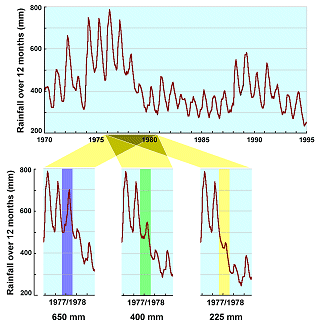 Figure 2. The observed rainfall is shown
above, with three adjustments made to
the rainfall in 1977/1978. In that year
total rainfall was adjusted to be 225
mm, 400 mm, and 650 mm, shown
below. The peaks in the graphs do not
match these values because Savanna
calculates rainfall over a long period.
Figure 2. The observed rainfall is shown
above, with three adjustments made to
the rainfall in 1977/1978. In that year
total rainfall was adjusted to be 225
mm, 400 mm, and 650 mm, shown
below. The peaks in the graphs do not
match these values because Savanna
calculates rainfall over a long period.
| |
After adapting Savanna to the farm cited, we ran computer simulations over the 25 year period
for the drought, normal, and wet rainfall amounts. In general, the simulation responded as would
be expected. For example, herbaceous biomass declined dramatically because of the drought
(Figure 3).
|
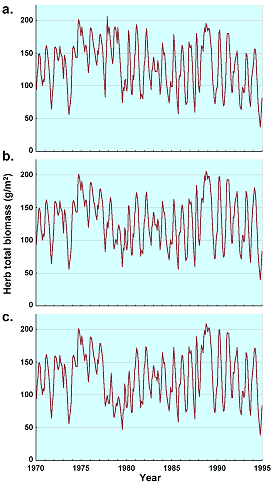 Figure 3. Total herbaceous biomass averaged across the
farm, when rainfall was above normal (a), normal
(b), and below normal (c). Note in (c) how
herbaceous biomass declined dramatically during
the simulated drought in 1977/1978. Figure 3. Total herbaceous biomass averaged across the
farm, when rainfall was above normal (a), normal
(b), and below normal (c). Note in (c) how
herbaceous biomass declined dramatically during
the simulated drought in 1977/1978.
| |
Highly palatable grasses declined relative to low
palatable grasses during the drought, and annuals were
more likely to become abundant. Cattle populations
declined only slightly during the dry mid-1980s when
rainfall was abundant in 1977/1978 (Figure 4a), and
during the entire 25 year period, 1,507 animals were
culled to be sold. With normal rainfall in 1977/1978,
cattle declined by about 200 animals (Figure 4b), and
1,328 cattle were culled. When a drought was
simulated, cattle numbers declined by half (Figure 4c),
and over the entire 25 year period, 1,212 animals were culled.
| |
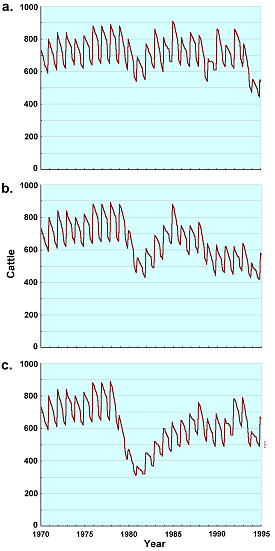 Figure 4. The cattle population on the farm, when
rainfall in 1977/1978 was above normal (a), normal
(b), and below normal (c).
Figure 4. The cattle population on the farm, when
rainfall in 1977/1978 was above normal (a), normal
(b), and below normal (c).
| |
The utility of combining forecasts with modeling
farms is demonstrated by adjusting the stocking rate in
response to a forecasted drought. SAWB forecasts
three to six months into the future, and so a farmer
might expect to have a forecast of an upcoming dry
season by June. Assuming such a forecast had been
received in 1977, we reduced the target population size
after culling by 200. Compared to the cattle
population when the drought was modeled and the
maximum stocking level constant (Figure 4c and the
gray line in Figure 5a), removing animals prior to the
drought reduced the stress on the range and allowed the
livestock to recover more rapidly (the black line in Figure 5a). Further, because the range was in
better condition, the population was able to increase during a wet period in the early 1990s
(Figure 5a). Over the span of the simulation,
an additional 228 cattle were culled to be sold
when the forecast was used (Figure 5b), even
though the cattle populations were similar at
the end of the simulation.
| |
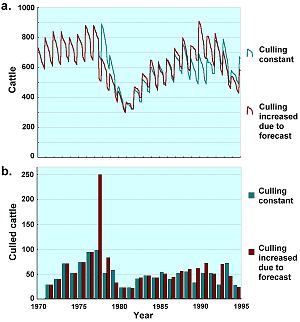 Figure 5. Cattle populations with a simulated
drought in 1977/1978 are compared (a),
when a given stocking rate is maintained
(gray line) and when stocking is reduced
in response to a long-term forecast (black
line). In (b), the number of animals
culled (sold) is compared. Some males
are culled every year to maintain
reasonable sex ratios. Over the entire
simulation, 228 more animals were culled
when forecasts were used in planning.
Figure 5. Cattle populations with a simulated
drought in 1977/1978 are compared (a),
when a given stocking rate is maintained
(gray line) and when stocking is reduced
in response to a long-term forecast (black
line). In (b), the number of animals
culled (sold) is compared. Some males
are culled every year to maintain
reasonable sex ratios. Over the entire
simulation, 228 more animals were culled
when forecasts were used in planning.
| |
Of course, forecasts cannot provide precise
estimates of the rainfall that can be expected,
and so farmers must judge for themselves the balance between risk and reward. Further, a
forecasted drought could reduce livestock prices just as the farmer is considering reducing
stocking levels. Forecasts and the economies
of farms are addressed elsewhere. Here, we have provided an example of how forecasts linked with an ecosystem
model may be useful.
|
| |
| |



